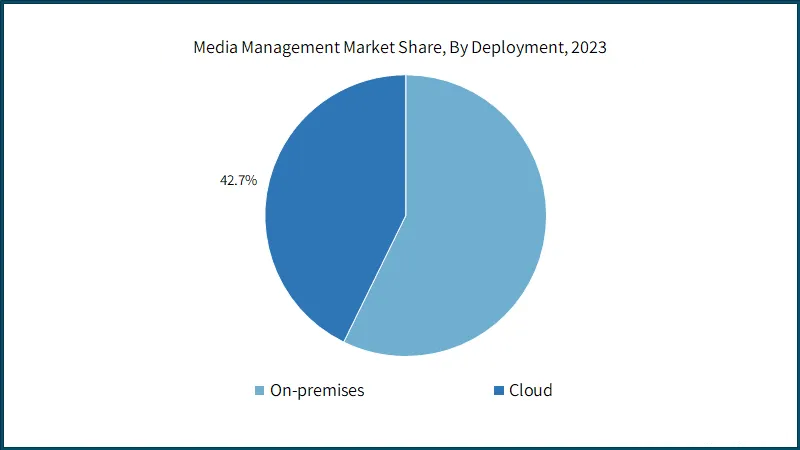How we create and share content has evolved dramatically in today’s digital age. With countless platforms and formats at our fingertips, managing media effectively is more crucial than ever.
Media management isn’t just a technical necessity; it’s a game-changer for anyone looking to elevate their content creation process. Imagine having all your assets organized, accessible, and seamlessly integrated into your workflow.
Sounds like a dream? It doesn’t have to be! By mastering media management, you can unlock new levels of creativity and efficiency that will set your work apart from the rest. Let’s dive into how this powerful tool can transform your approach to crafting compelling content.
Understanding Media Management
Media management encompasses the processes and tools used to organize, store, and distribute digital assets. It’s a crucial aspect of modern content creation.
At its core, media management helps streamline how creative teams handle their projects. This includes everything from images and videos to audio files. Companies can maintain better control over their media libraries by implementing effective systems.
Understanding media management also involves recognizing its role in collaboration. Teams can easily share resources, improving communication and productivity across departments.
Moreover, it aids in maintaining brand consistency. With organized access to approved materials, creators are less likely to use outdated or incorrect assets.
Familiarity with media management allows teams to react and proactively plan content strategies that resonate with audiences.

The Role of Media Management in Content Creation
Media management plays a crucial role in the content creation process. It allows creators to efficiently find, organize, and utilize their digital assets.
Maintaining a structured library of images, videos, and audio clips allows teams to quickly access their needs, saving time and reducing frustration during production.
Moreover, effective media management ensures consistency in branding. When all team members have access to approved assets, cohesive messaging across platforms results.
Collaboration also flourishes under a robust media management system. Team members can share resources seamlessly, leading to richer content that benefits from diverse perspectives.
Using analytics tools within media management systems provides insights into what types of content resonate best with audiences. This data-driven approach helps refine future projects for even more significant impact.
Benefits of Implementing a Media Management System
Implementing a media management system can transform how content is created and shared. It centralizes all media assets, making them easily accessible for teams. This accessibility speeds up project timelines, allowing creators to focus on their craft rather than searching for files.
Another advantage is improved collaboration. Team members can work together seamlessly, sharing feedback in real time. This fosters creativity and enhances the quality of the output.
A streamlined organization also means better asset tracking. You can effortlessly monitor usage rights and licenses, reducing legal risks associated with content distribution.
Additionally, automation features within these systems reduce manual tasks. Automating repetitive processes like file renaming or format conversions frees up time for more strategic work.
Analytics tools integrated into most systems provide valuable insights into performance metrics. Understanding what resonates with your audience allows for more effective content strategies in the future.
Streamlining Workflow and Organization
Streamlining workflow and organization is crucial for effective media management. When content creators can easily access their resources, they save time and energy. This efficiency allows them to focus on what truly matters: crafting compelling narratives.
A well-organized media library quickly retrieves images, videos, and documents. This immediate access reduces frustration during the creative process. Teams can collaborate seamlessly when everyone knows where to find assets.
Additionally, establishing a transparent tagging system enhances discoverability. Tagging files with relevant keywords makes searching straightforward and intuitive. More than sifting through endless folders or losing track of essential materials.
Implementing automated workflows further boosts productivity. Automation handles repetitive tasks like file uploads or social media scheduling—freeing up creatives for higher-level thinking and innovation in their projects. The result? A smoother operation that fosters creativity rather than stifles it.
Tips for Efficient Content Creation with Media Management
Start by organizing your media assets. Use a clear folder structure that makes sense for your projects, and label files descriptively so you can find them later.
Next, utilize tagging and metadata effectively. Adding relevant keywords helps search large libraries. This saves valuable time when you’re on a tight deadline.
Implement collaboration tools within your media management system. These facilitate communication between team members and streamline feedback processes.
Create templates for recurring content types. Consistent styles can be easily replicated, reducing the effort needed each time.
Review and update your media library regularly. Remove outdated or irrelevant materials to keep things fresh and focused on current needs, ensuring efficiency remains high as projects evolve.

Media Management Market Share by deployment 2023
In 2023, the media management market experienced a dynamic shift in deployment strategies as organizations increasingly clamor for solutions that best align with their operational needs and technological capabilities.
On-premises systems continue to hold a significant share, appealing to enterprises that prioritize control over their data and require customized configurations tailored to their specific workflows.
These robust installations provide businesses with the confidence to manage sensitive content internally, fostering an environment where security protocols can be meticulously implemented.
Conversely, cloud-based deployments have surged in popularity due to their unparalleled scalability and flexibility. As companies recognize the advantages of remote access, streamlined collaboration across geographically dispersed teams becomes more feasible than ever before.
This transition towards cloud technologies also facilitates quicker updates and integration with various tools while reducing capital expenditure associated with hardware maintenance.
The interplay between on-premises infrastructure and innovative cloud services paints a vivid picture of an evolving landscape where media management adapts not only to advancements in technology but also responds dynamically to changing business needs and consumer expectations.
Conclusion
Media management plays a crucial role in enhancing content creation across various platforms. By organizing and streamlining your media assets, you can improve the efficiency of your workflow. This allows for more creative freedom and less time spent on logistical challenges.
Implementing a robust media management system not only provides structure but also offers valuable insights into your content’s performance. The benefits are clear: improved collaboration, increased productivity, and, ultimately, higher-quality output.
Utilizing tips for effective content creation paired with an efficient media management approach will set you apart in today’s competitive landscape. Embrace these strategies to elevate your content game and watch as creativity flourishes within an organized framework.


Leave A Comment